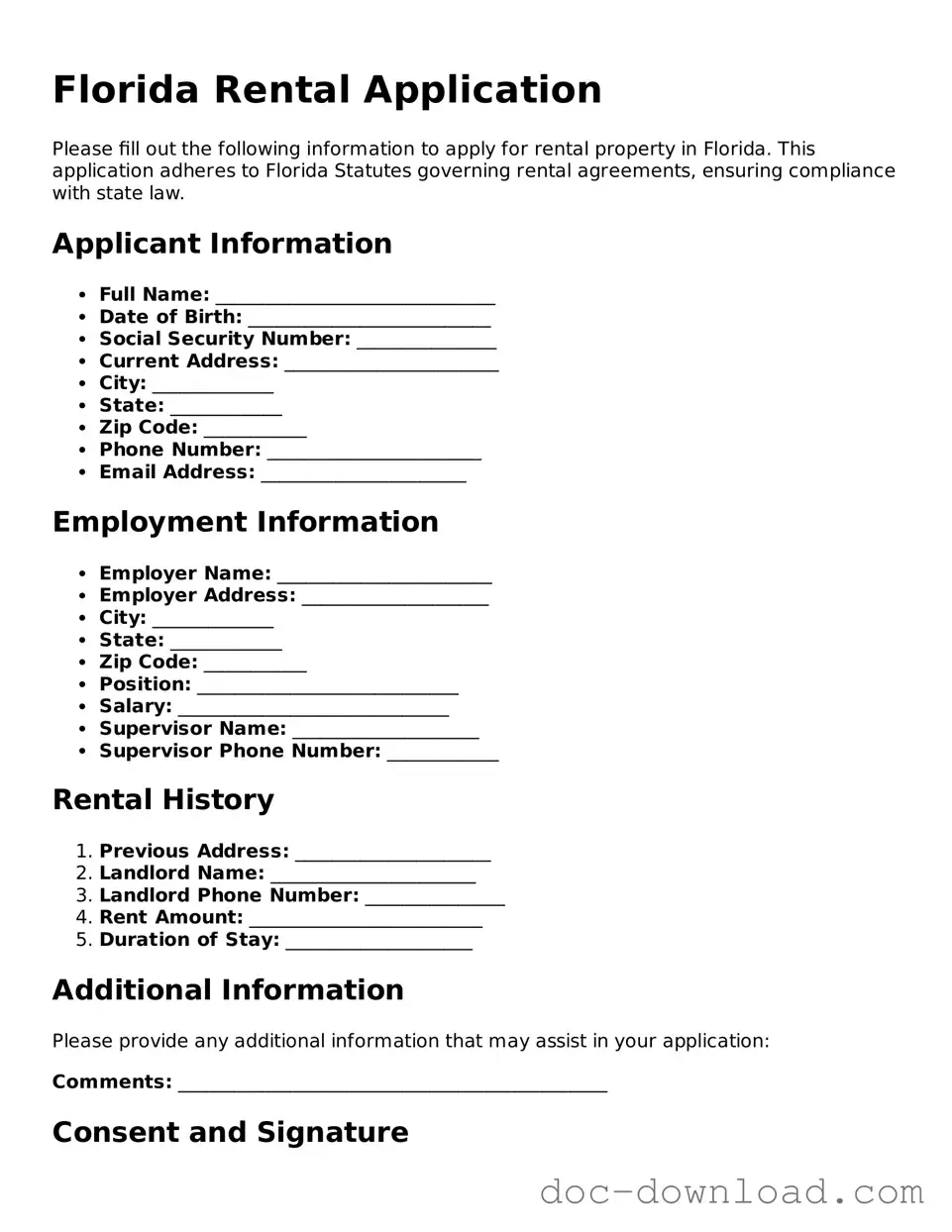The Florida Rental Application form shares similarities with the standard lease agreement. Both documents are essential in the rental process, as they establish the terms and conditions of the rental arrangement. While the rental application focuses on gathering information about potential tenants—such as their employment history, income, and rental history—the lease agreement outlines the rights and responsibilities of both landlords and tenants once a rental relationship is established. Essentially, the application serves as a precursor to the lease, helping landlords decide who to accept as tenants.
Another document akin to the Florida Rental Application is the tenant screening report. This report often includes credit checks, background checks, and rental history verification. Just like the rental application, it aims to provide landlords with a comprehensive view of a prospective tenant's reliability and financial responsibility. While the application requires tenants to provide information directly, the screening report compiles data from various sources to help landlords make informed decisions.
The roommate agreement is also similar in nature to the Florida Rental Application. This document is particularly useful when multiple tenants share a rental property. It outlines each roommate's responsibilities, such as rent payments and shared utilities, similar to how the rental application details a tenant's background and financial situation. Both documents help establish clear expectations and can prevent disputes among roommates, ensuring a smoother living arrangement.
Additionally, the employment verification form bears resemblance to the rental application. This document is often used by landlords to confirm a tenant's employment status and income level. Just as the rental application requires applicants to disclose their job information, the employment verification form provides landlords with the necessary assurance that a tenant can meet their financial obligations. Both documents serve to protect the landlord's interests by confirming a tenant's ability to pay rent.
The personal reference form is another document that aligns closely with the Florida Rental Application. This form allows potential tenants to provide contact information for individuals who can vouch for their character and reliability. Similar to the rental application, which asks for personal history and references, the personal reference form helps landlords assess the trustworthiness of applicants. It adds an additional layer of assurance that the tenant will be a responsible occupant.
The pet application form is also comparable to the Florida Rental Application, especially for pet-friendly rentals. This document gathers information about a tenant's pets, including breed, size, and vaccination history. Just as the rental application collects essential details about the tenant, the pet application ensures that landlords understand the potential impact of pets on their property. Both forms are crucial in evaluating whether a prospective tenant meets the specific criteria set by the landlord.
In Colorado, the importance of properly managing one's legal and financial affairs cannot be overstated, particularly through the use of significant documents like the Power of Attorney. This authorized document empowers an individual to designate a trusted person to make critical decisions on their behalf, resembling the way landlords rely on various forms to vet potential tenants. Similar to the procedures involved in rental agreements or tenant screening, ensuring all necessary documentation is properly completed can provide peace of mind. For those looking for specific resources related to these legal forms, Colorado PDF Forms offers printable versions that simplify the process of preparing such crucial legal documents.
Lastly, the security deposit agreement is another document that resembles the Florida Rental Application. While the application focuses on tenant qualifications, the security deposit agreement outlines the terms regarding the deposit required to secure the rental. It specifies conditions under which the deposit may be withheld, similar to how the rental application sets expectations for tenant behavior. Both documents are vital in protecting the landlord's investment while ensuring that tenants are aware of their financial responsibilities.
